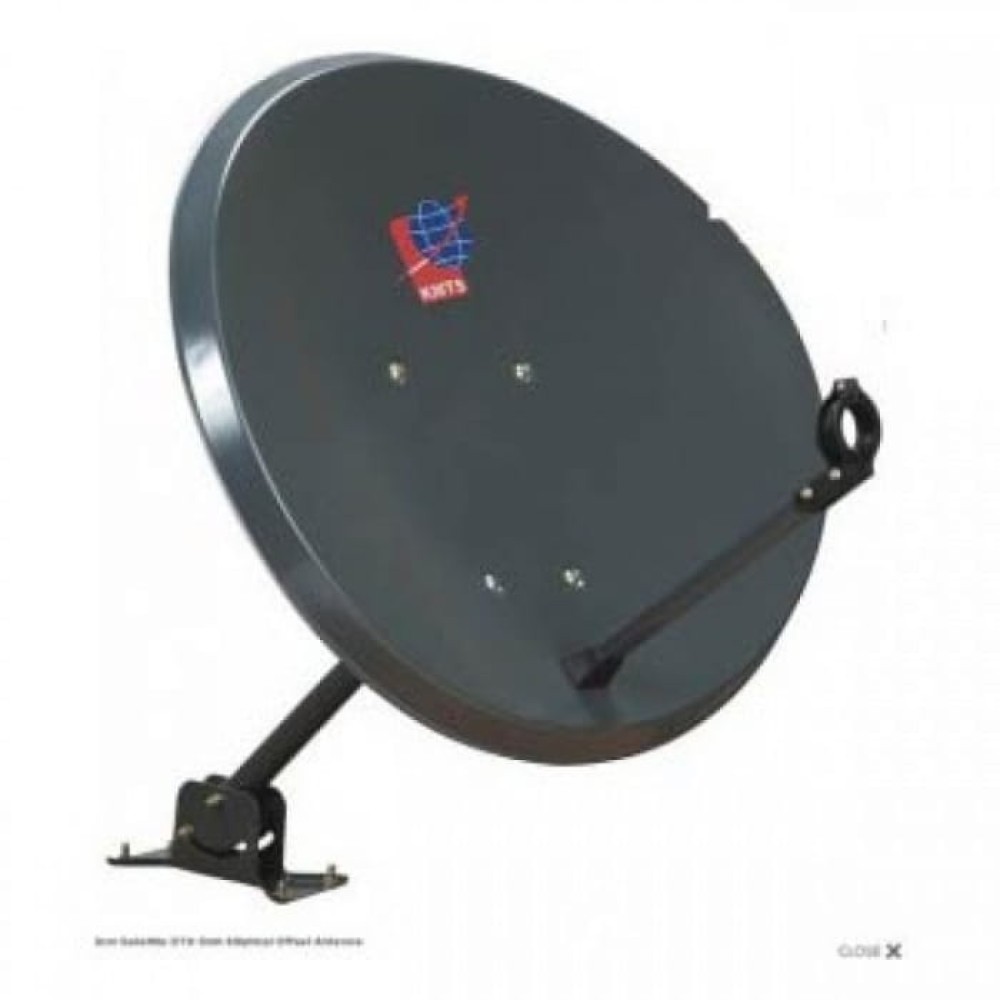A Ku band dish antenna is a type of satellite dish antenna specifically designed to receive or transmit signals in the Ku band frequency range.
Here’s a breakdown of what that means:
- Satellite Dish Antenna: A parabolic reflector designed to focus radio waves to or from a satellite. The curved shape concentrates the weak signals from the satellite onto a single point (the feedhorn) or directs the transmitted signals into a focused beam towards the satellite.
- Ku Band: A portion of the electromagnetic spectrum in the microwave range, specifically from approximately 12 to 18 gigahertz (GHz). The “Ku” stands for “K-under,” as it’s below the K band.
Key Characteristics of Ku Band Dish Antennas:
- Frequency Range: Operates within the 12-18 GHz range for transmitting and receiving satellite signals. Downlink frequencies (from satellite to Earth) are typically in the 10.7 to 12.7 GHz range.
- Size: Generally smaller than C-band dish antennas (which operate in the 4-8 GHz range) for similar gain. Common sizes for Ku band dishes for home use range from around 45 cm to 1 meter in diameter. Larger dishes (1.2 meters or more) are used for professional applications or in areas with weaker signals.
- Less Susceptible to Rain Fade than Ka Band: While Ku band is affected by heavy rain, the signal attenuation (rain fade) is generally less severe compared to the higher frequency Ka band (26-40 GHz). However, it’s more susceptible to rain fade than C band.
- Applications: Ku band is widely used for:
- Direct-to-Home (DTH) Television Broadcasting: Services like satellite TV often use Ku band for transmitting channels to subscribers’ dishes.
- Satellite Internet: Providing broadband internet services, especially in areas where terrestrial internet infrastructure is limited.
- Video Distribution: Broadcasting video content to cable headends or other distribution points.
- Corporate Networks: Establishing private communication networks for businesses.
- Occasional Use Feeds (OU): Transmission of news, sports, and other events.
- Components: A typical Ku band dish antenna system includes:
- Parabolic Dish: The reflective surface that focuses the satellite signal. It’s usually made of aluminum or fiberglass. Offset and prime focus are common types of parabolic dish feeds used with Ku band.
- LNB (Low Noise Block downconverter): Mounted at the focal point of the dish, the LNB receives the focused microwave signal, amplifies it, and converts it to a lower frequency (L-band) that can be transmitted through a coaxial cable to the satellite receiver. Ku band LNBs are specifically designed for the Ku band frequency range.
- Mounting Structure: Supports the dish and allows for precise aiming towards the desired satellite.
- Coaxial Cable: Connects the LNB to the satellite receiver.
In summary, Ku band dish antennas are a crucial part of satellite communication systems operating in the 12-18 GHz frequency range, widely used for television broadcasting, internet services, and various other communication applications. Their smaller size compared to C-band dishes and relatively good performance in moderate weather conditions make them a popular choice.

